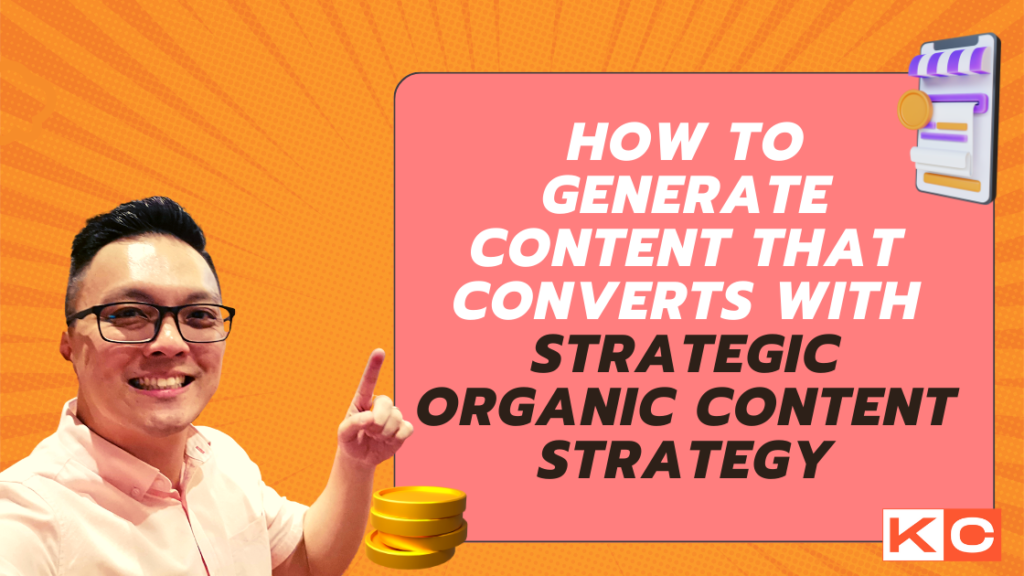In the ever-changing world of digital marketing, producing and strategically using content has become essential for companies looking to reach their marketing objectives. Target audiences can be captivated, engaged, and converted by content when it is carefully created and matched with marketing goals. This in-depth manual examines the value of strategic content, the essential elements of a winning content strategy, and how companies may use it to meet and surpass their marketing objectives.
I. Understanding the Significance of Strategic Content:
1.1. Establishing Brand Identity:
An effective technique for defining and sculpting a brand’s identity is using content strategically. It focuses on communicating the brand’s values, personality, and unique selling propositions rather than just advertising goods or services. Businesses can develop a unique brand that connects with their target audience by using consistent messaging and storytelling.
1.2. Building Trust and Credibility:
Customers are more inclined to interact with brands they believe in. Strategically using content, backed by authenticity and reliability, helps build trust over time. By providing valuable information, addressing customer pain points, and showcasing expertise, businesses can position themselves as industry authorities, fostering credibility that contributes to long-term customer relationships.
1.3. Enhancing Visibility and Reach:
Search engines give priority to content that is up-to-date, valuable, and pertinent. Businesses can improve their search engine results by constantly producing high-quality content, thanks to a comprehensive content strategy. Reach is expanded as a result of this improved visibility, drawing in a larger audience and possible clients.

II. Key Components of an Effective Content Strategy:
2.1. Audience Research and Persona Development:
To create content that resonates, it is essential to understand the target audience. Creating buyer personas and carrying out in-depth audience research allow firms to customize their content to the unique requirements, tastes, and habits of their prospective clients. Content that speaks directly to the intended audience is built upon this knowledge.
2.2. Goal Definition and Alignment:
Every piece of content ought to be in line with particular marketing objectives. A clear content strategy describes how each piece of content contributes to the overall goals, which may include increasing brand awareness, website traffic, lead generation, or sales. This alignment guarantees a unified and intentional approach to content production.
2.3. Content Calendar and Consistency:
In content marketing, consistency is essential. Businesses may better plan and coordinate their content generation activities by using a content calendar. It guarantees a continuous stream of content over several platforms, avoiding irregular releases that may cause viewers to lose interest. Businesses can also coordinate their messaging with seasonal events, trends, and promotions by using a content calendar.
2.4. Diversification of Content Types:
To accommodate various audience preferences, a strong content strategy combines a wide variety of content types. A variety of forms, including blog entries, articles, podcasts, videos, infographics, and social media updates, should be used by firms. This not only reaches viewers on a variety of platforms but also keeps the content interesting and engaging.

III. Leveraging Strategic Content for Specific Marketing Goals:
3.1. Increasing Brand Awareness:
Creating content with purpose is essential to increasing brand recognition. Companies can accomplish this by producing visually appealing, shareable content that is consistent with their corporate identity. Content can be made more widely visible by utilizing influencers, partnerships, and social media platforms. This exposes the brand to a larger audience.
3.2. Driving Website Traffic:
Businesses should use relevant keywords in their content optimization to generate traffic to their websites. Engaging snippets, compelling headlines, and meta descriptions encourage people to click through. Furthermore, adding internal links to content facilitates website navigation for users, which raises page views and lowers bounce rates.
3.3. Generating Leads:
Well-chosen content is an effective means of generating leads. Companies can produce gated content, such as whitepapers, webinars, or ebooks, where users must enter their contact details to gain access. Well-placed calls-to-action (CTAs) in blog posts and other content formats prompt readers to sign up, subscribe, or request more information.
3.4. Nurturing Customer Relationships:
Not only is content essential for drawing in new clients, but it is also essential for fostering current ones. Providing current clients with interesting and engaging information regularly helps to maintain brand awareness. Personalized content according to consumer preferences, special offers, and email newsletters all help to create a strong and long-lasting relationship.
Strategic content is crucial for businesses in the digital marketing world, fostering brand identity, trust, and visibility. Key elements include audience research, goal alignment, consistency, and diversification. It can boost leads, website traffic, brand awareness, and customer connections. Companies must adapt their content strategies to stay competitive and sustainable, promoting long-term success and growth.




Leave a reply